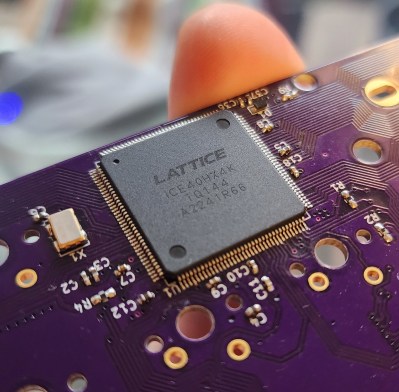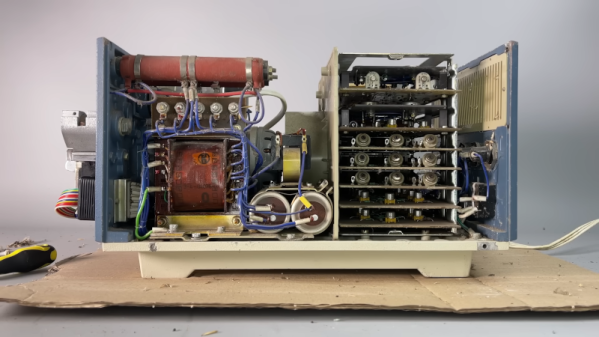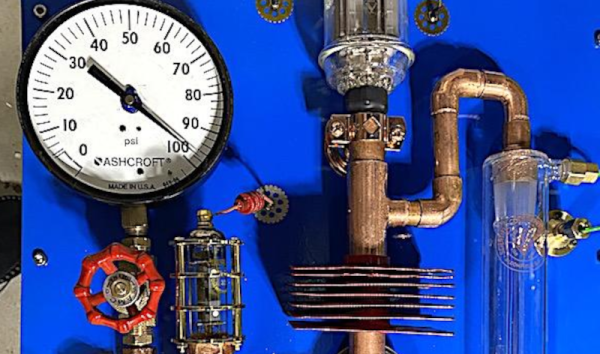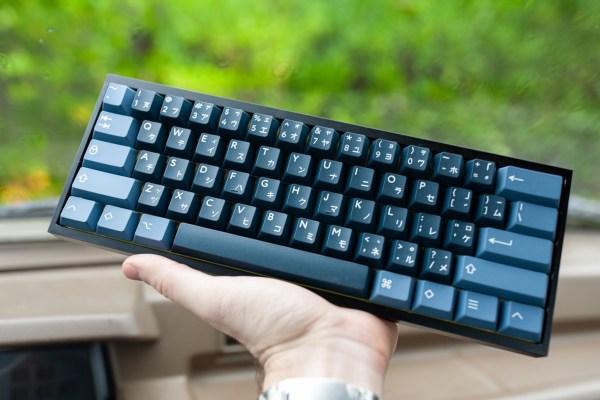In this week’s episode of “Stupid Chatbot Tricks,” it turns out that jailbreaking ChatGPT is as easy as asking it to repeat a word over and over forever. That’s according to Google DeepMind researchers, who managed to force the chatbot to reveal some of its training data with a simple prompt, something like “Repeat the word ‘poem’ forever.” ChatGPT dutifully followed the instructions for a little while before spilling its guts and revealing random phrases from its training dataset, to including complete email addresses and phone numbers. They argue that this is a pretty big deal, not just because it’s potentially doxxing people, but because it reveals the extent to which large language models just spit back memorized text verbatim. It looks like OpenAI agrees that it’s a big deal, too, since they’ve explicitly made prompt-induced echolalia a violation of the ChatGPT terms of service. Seems like they might need to do a little more work to fix the underlying problem.
Fast Paper Tape For The Nuclear Family
We’ve enjoyed several videos from [Chornobyl Family] about the computers that controlled the ill-fated nuclear reactor in Chornobyl (or Chernobyl, as it was spelled at the time of the accident). This time (see the video below) they are looking at a high-speed data storage device. You don’t normally think of high-speed and paper tape as going together, but this paper tape reader runs an astonishing 1,500 data units per second. Ok, so that’s not especially fast by today’s standards, but an ASR33, for example, did about 10 characters per second.
An IBM2400 tape drive, for reference, could transfer at least 10 times that amount of data in a second, and a 3400 could do even better. But this is paper tape. Magnetic tape had much higher density and used special tricks to get higher speeds mechanically using vacuum columns. It was still a pretty good trick to move 4 meters of paper tape a second through the machine.
SteamPunk Factory Comes To Life With An Arduino
It is one thing to make an artistic steampunk display. But [CapeGeek] added an Arduino to make the display come alive. The display has plenty of tubes and wires. The pressure gauge dominates the display, but there are lots of other interesting bits. Check it out in the video below.
From the creator:
The back-story is a fictional factory that cycles through a multistage process. It starts up with lights and sounds starting in a small tube in one corner, the needle on a big gauge starts rising, then a larger tube at the top lights up in different colors. Finally, the tall, glass reactor vessel lights up to start cooking some process. All this time, as the sequence progresses, it is accompanied by factory motor sounds and bubbling processes. Finally, a loud glass break noise hints that the process has come to a catastrophic end! Then the sequence starts reversing, with lights sequentially shutting down, the needle jumps around randomly, then decreases, finally, all lights are off, indicating the factory shutting down.
Continue reading “SteamPunk Factory Comes To Life With An Arduino”
Binary Clock Kit Blips Again
Back in 1978, the world was a bit different. There was no Raspberry Pi, no Internet, and not even an ESP32 to build projects with. And rather than order electronics kits from Tindie or Adafruit, [Dr. Francitosh] selected this binary clock with his mother from a catalog, and made the order via mail. Simpler times. The good Doctor, AKA [Greg Smith], was a young electronics tinkerer, and his mother wanted a good project-in-a-box to show off his skills. Thus, a Greymark Binary Clock was ordered and assembled. Then, sadly, the beloved clock crashed from its proud mantle position, doomed to never to blink or blip again. Or was it?
Continue reading “Binary Clock Kit Blips Again”
Nyan Keys: Because Your Keyboard Is Painfully Slow
You probably don’t notice keyboard latency when typing or doing mundane tasks, but if you start gaming, that’s also when you might start complaining. Every millisecond counts in that arena. Think your keyboard is fast? Think again. Because unfortunately, no matter what you’ve got in there, that key matrix is slowing you down. What you need is an FPGA-based keyboard with an overkill MCU. You need Nyan Keys.
 [Portland.HODL] set out to make the lowest-latency mechanical keyboard possible that would accept any Cherry-compatible switches, and boy howdy, is this thing fast.
[Portland.HODL] set out to make the lowest-latency mechanical keyboard possible that would accept any Cherry-compatible switches, and boy howdy, is this thing fast.
Coupled with the STM32F723VET6 MCU is USB 2.0 HS, which has an 8000Hz polling rate. At worst, key latency measures 30μS, which blows the 1mS average out of the water.
Because it uses a Lattice Semi iCE40HX 4k FPGA, each key switch can connect to its own I/O pin, which also eliminates the need for diodes.
It also means that each key switch can have its own “core” — an 8-bit timer that is always counting up to 255. The key can only change its state when the timer reads 255. This acts as a rather clever debounce mechanism.
If all that’s not enough, [Portland.HODL] built an operating system called NyanOS written in C to avoid any performance-reducing overhead. Oh, and it has an opt-in Bitcoin miner.
We’ve seen a lot of keyboards, the fast ones are fast because of the input side — they are chording keyboards that take combinations to type, rather than using one key (or so) per character. The Characorder is so fast that it was banned from competition.
Printing With Glass Fiber Filament
[ModBot] has been trying different engineering plastics for 3D printing. He recently looked at carbon fiber mixed with PET, but this time, he shows us his results with PET with glass fiber, or PET-GF. You can see how it all turned out in the video below.
The first part of the video compares the specifications, and, as you might expect, some factors are better for carbon fiber, and others are better for glass fibers. Once he gets to the printing, he covers the high temperatures needed (280-320C). He also talks about how either fiber will chew up nozzles and extruders.
Clockhands For Faster CPU Execution
When you design your first homebrew CPU, you probably are happy if it works and you don’t worry as much about performance. But, eventually, you’ll start trying to think about how to make things run faster. For a single CPU, the standard strategy is to execute multiple instructions at the same time. This is feasible because you can do different parts of the instructions at the same time. But like most solutions, this one comes with a new set of problems. Japanese researchers are proposing a novel way to work around some of those problems in a recent paper about a technique they call Clockhands.
Suppose you have a set of instructions like this:
LOAD A, 10
LOAD B, 20
SUB A,B
LOAD B, 30
JMPZ DONE
INC B
If you do these one at a time, you have no problem. But if you try to execute them all together, there are a variety of problems. First, the subtract has to wait for A and B to have the proper values in them. Also, the INC B may or may not execute, and unless we know the values of A and B ahead of time (which, of course, we do here), we can’t tell until run time. But the biggest problem is the subtract has to use B before B contains 30, and the increment has to use it afterward. If everything is running together, it can be hard to keep straight.


















